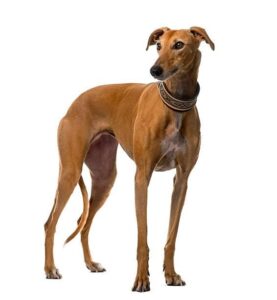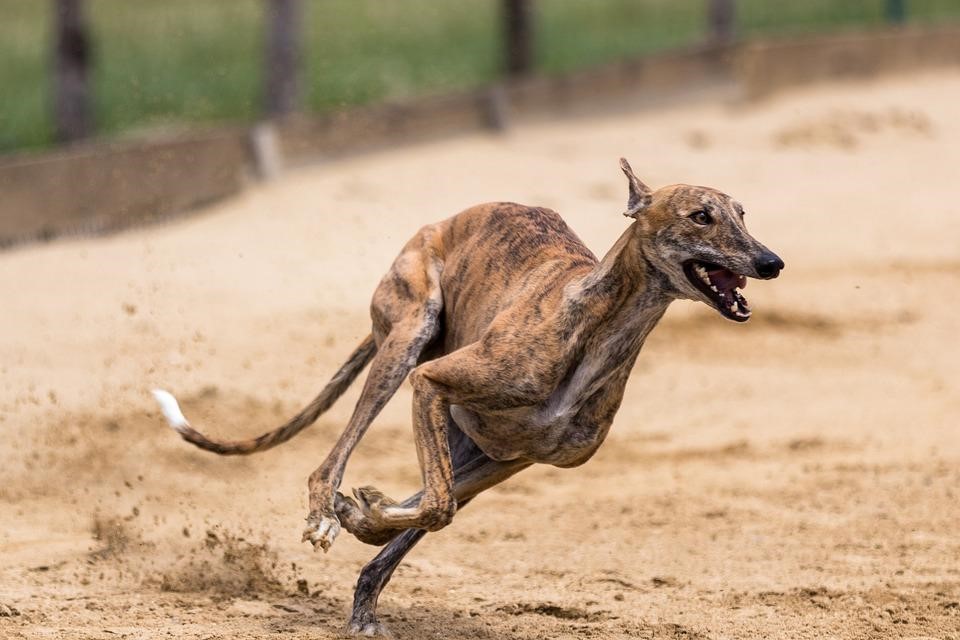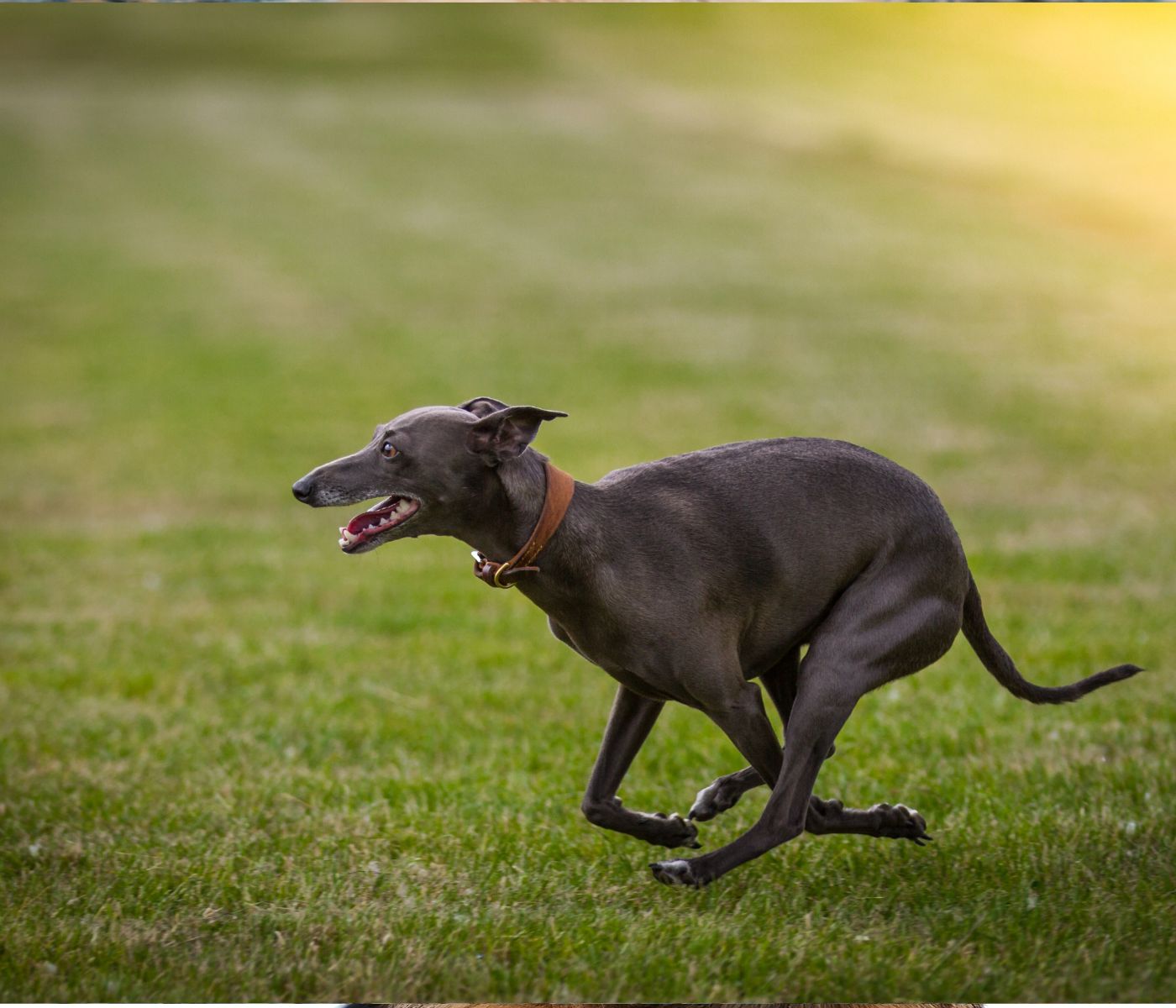Greyhound racing is an exciting sport and one that has been around for a long time. The history of this breed is quite exciting, and they are still used in racing today. However, the lifespan of greyhounds is shorter than some other dog breeds, such as Labs or Cocker Spaniels.
Greyhounds can live around 10-14 years on average, which is a pretty good lifespan. They will not get as old as some other breeds, but they are still healthy and happy.
There are many different types of greyhounds, but their average lifespan is the same. The only difference is in height and weight. Some greyhounds can be as small as 25 pounds, while others can weigh up to 100 pounds!
The average height of a greyhound is around 35 inches, but it can be as short as 30 inches or as tall as 40 inches. Greyhounds have short coat that is very easy to maintain.
They do not shed very much, so they only need to be brushed once or twice a week. They are also a low-maintenance dog breed because they do not require too many toys or treats.
History of the Greyhound Breed:

Greyhounds have a long history of being used as hunting dogs. They were first bred in ancient Greece and Rome, where they were used for hunting rabbits and other small game.
In the 19th century, they became popular as racing dogs because they could run faster than horses and ponies. They were extremely popular as pets, and even today, they remain one of the most popular dog breeds.
Greyhounds are an intelligent breed, which is why they make such good racing dogs. They also have excellent memory and can learn new commands quickly. The Greyhound has a small head and a long muzzle. Its eyes are small, dark, and oval.
The ears are large and soft but may stand up when the dog is excited or alert. Its short legs end with round paws with tufts of fur between their toes.
The Greyhound has a long, slender body with a deep chest and strong muscles. The coat is short, smooth, and sleek. It can be any color from white to black, but most commonly, it is red or brindle.
How long do greyhounds live?

Greyhounds live an average of 10-14 years. They have been known to live up to 18 years, with the oldest-known greyhound living until it was 19 years old. Greyhounds are known to live long lives because they are very healthy dogs.
They are not prone to many diseases or illnesses, which is why they have an average lifespan. The only health problems that the greyhound breed has are heart issues and eye problems (which can be fixed with treatment).
The breed has been used for racing since at least around 1820; it was first introduced into England in 1828.
The first greyhound race was held in the United States in 1876, and the American Greyhound Track Operators Association (AGTOA) was formed in 1922. The AGTOA is responsible for regulating greyhound racing in the United States.
What Health issues do Greyhounds have?

As you can see, greyhounds are very healthy. They have a very low incidence of genetic diseases and live long lives.
Greyhounds are prone to hip dysplasia, heart disease, bloat, and skin allergies, but these issues can be reduced or avoided by following the care instructions given by your vet.
The most common health problems that affect greyhound dogs include:
Hip Dysplasia (HD):
HD is a degenerative joint disease affecting young dogs and older ones.
It develops when there isn’t enough cartilage left in their joints which causes them to become loose or unstable over time, resulting in pain when walking or jumping up stairs, etc.
Hip dysplasia is the most common health problem in greyhounds. It affects approximately 50% of dogs in the United States and can devastate their quality of life if not treated.
Symptoms include limping, lameness, and pain when running or exercising. If left untreated, dogs may develop arthritis and other joint problems.
Musculoskeletal injuries:
A greyhound can suffer from a variety of musculoskeletal injuries, including:
-Back problems such as disc disease and spinal stenosis.
-Cervical vertebral fractures (wobbly neck).
-Degenerative joint disease (DJD), which causes arthritis and lameness in young dogs.
Digestive problems:
Greyhounds are prone to a variety of digestive issues, including -Gastric torsion (bloat) -Pancreatitis -Inflammatory bowel disease (IBD) -Colitis -Perianal fistulas, which cause discharge from the anus.
Osteosarcoma:
An osteosarcoma is a form of bone cancer that can occur in greyhounds.
It usually affects the shoulder or hip bones. Dogs diagnosed with osteosarcoma typically live just a few months after diagnosis.
Bloat:
This occurs when gas builds up in the stomach, which leads to painful vomiting or even death if left untreated.
What are the most common causes of death in Greyhounds?

The most common causes of death in Greyhounds are cancer, heart disease, and kidney disease. Other causes include lung disease, liver disease, and skin problems.
Diabetes is also common in older dogs but can be prevented with regular monitoring and testing for glucose levels.
Bloat is a serious condition that occurs when the stomach expands too much, causing gas or fluid to build up inside your dog’s digestive tract; this can cause an intestinal blockage which requires immediate surgery to correct if left untreated.
Anemia (low red blood cell count) can occur if there’s an injury to a joint or bone during growth spurts.
It doesn’t always mean your pup has arthritis because many other factors contribute to low blood counts, including age-related macular degeneration, which affects vision loss over time.
Liver disease can cause the liver to enlarge and is often a sign of other health problems, such as chronic kidney disease or pancreatitis. You are having your dog tested for liver function at least once a year is essential.
Do Greyhounds Race for their Whole Lives?
Greyhounds retired from racing at around age 6. They can live until 15 years old, but most don’t make it to that age.
Greyhounds have a very high energy level, so they need plenty of exercise and affection. If you’re considering adopting one, it’s best to have time on your hands because greyhounds need lots of attention!
Are Greyhounds Good Pets?
Greyhounds are very affectionate and loyal. They’re quiet, don’t shed hair, and can live in an apartment or house. It’s important to note that they need a lot of exercises because they have such long legs! If you have time for walks every day, this is the perfect pet.
These dogs are very gentle and patient with children, making them great family pets. They don’t need much training as they’re naturally well-behaved, but socializing them is essential to get used to other dogs and people.
FAQs:
Q: Are greyhounds intelligent?
A: Yes! They’re brilliant, and they can learn new tricks quickly. But they also need a lot of attention, so make sure you have time for walks and playtime every day if you get one.
Q: What happens to greyhounds after they retire?
A: Greyhounds are retired from racing at about six years old, and most of them are placed in homes with families that want to adopt them. Some go to the track’s kennels or the adoption center where they live until they’re adopted.
Q: Why do greyhounds lose their teeth?
A: Greyhounds don’t have hard enamel on their teeth, meaning they can lose their teeth when they’re young. If you notice your Greyhound losing their teeth, take them to the vet immediately so it can get fitted for a soft mouth guard!
Q: Are greyhounds powerful?
A: Greyhounds are powerful and can reach up to 45 miles per hour. They have a lean build, which means they don’t have much muscle, but their lean muscles allow them to run fast.
Q: Do greyhounds need another dog?
A: Greyhounds are very social animals and do best when they have another dog to play with. If you don’t have another dog, take your Greyhound somewhere where it can interact with other dogs and people!
